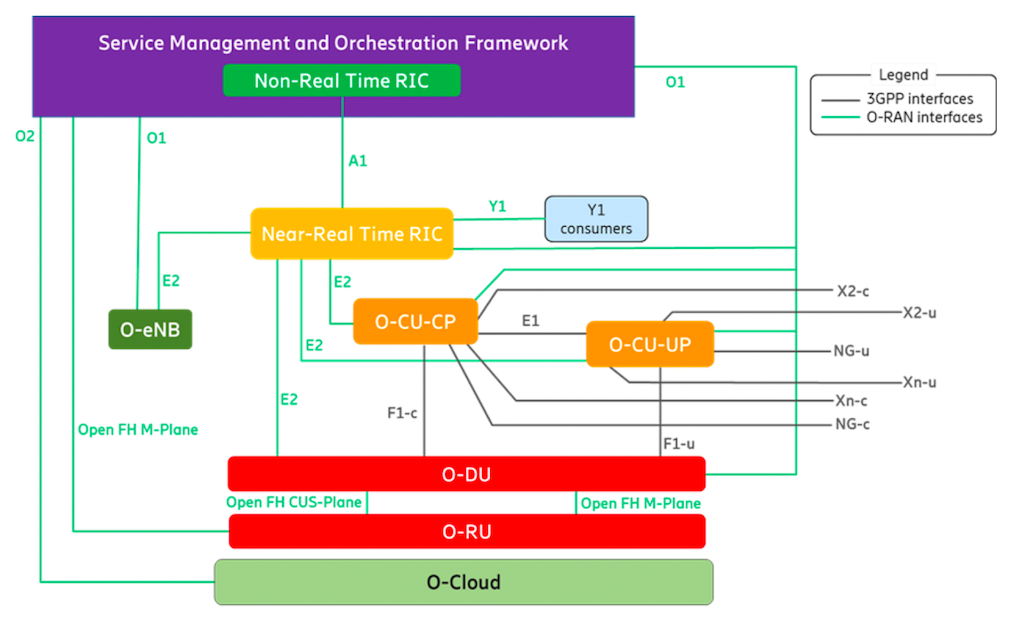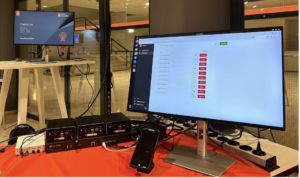We are pleased to announce the results of the recent 2026 Aether Technical Steering Team (TST) elections. Each of these individuals has been elected by the community to a 2-year term on the Aether TST: Larry Peterson (Princeton), Sean Condon (Red Hat), Ajay Lotan Thakur (Oracle), Woojoong Kim (Microsoft) and Aneesh Kumar (C-DAC).
The Aether Project is experiencing continued acceleration in community contributions, driving significant enhancements and expanding ecosystem support. As we look ahead to an exciting year in 2026, we would like to thank existing community members for their continued support and invite new contributors to join us.
About Our New Aether TST Members
 Ajay Lotan Thakur was elected to the Aether Technical Steering Team (TST) in recognition of his deep technical expertise and long-standing contributions to open-source 4G/5G mobile core technologies. With two decades of experience in datacom and telecom systems, Ajay has architected and delivered large-scale distributed systems, cloud-native mobile core networks, and advanced telecom tooling across multiple leading organizations. He is a Senior IEEE Member and a Fellow of the British Computer Society (FBCS), and has supported the research community through technical reviews, talks, and collaborations.
Ajay Lotan Thakur was elected to the Aether Technical Steering Team (TST) in recognition of his deep technical expertise and long-standing contributions to open-source 4G/5G mobile core technologies. With two decades of experience in datacom and telecom systems, Ajay has architected and delivered large-scale distributed systems, cloud-native mobile core networks, and advanced telecom tooling across multiple leading organizations. He is a Senior IEEE Member and a Fellow of the British Computer Society (FBCS), and has supported the research community through technical reviews, talks, and collaborations.
Ajay has been a key contributor to the Aether Project since 2019, working closely with universities, research institutes, and industry partners. His contributions to Aether and SD-Core include: designing and implementing network slicing APIs for both 4G and 5G; enabling closed-loop controls for rogue-subscriber remediation and cyber-attack prevention; integrating UPF features into real mobile networks; driving the architecture and delivery of a common UPF layer for the P4-UPF and BESS-UPF implementations; guiding community deployments of Private 5G networks; debugging complex issues raised by research teams; reviewing and refining design proposals; and assisting in roadmap planning as part of the TST. He has also collaborated with organizations including Canonical, Purdue University, and other academic partners to expand the project’s adoption.
Ajay is a Principal Member of Technical Staff at Oracle (OCI) and previously served as a Cloud Software Architect at Intel Canada, where he specialized in designing high-performance, cloud-native 4G/5G core components aligned with the latest 3GPP releases. He brings a strong foundation in 3GPP specifications, Kubernetes, microservices, and distributed systems, supported by industry certifications including CKA, CKAD, and multiple AWS, OCI certifications. His experience spans public clouds (OCI, GCP, AWS, Azure), telecom security, SIP/VoIP, routing protocols, and stateless system design, including a fully cloud-native Stateless SCEF solution delivered at Affirmed Networks.
Ajay holds a Master’s degree in Telecommunication Engineering from the Indian Institute of Science (IISc) Bangalore. He continues to actively support the open-source community and aims to drive broader adoption and innovation within the Aether ecosystem through his ongoing role on the TST.
 Mr. Aneesh Kumar K. B. (Member, IEEE) is a scientist at the Centre for Development of Advanced Computing (C-DAC), Thiruvananthapuram, India. He has over twenty years of experience in designing and architecting networking and network management solutions for large-scale, heterogeneous networks. His areas of expertise include 5G Core Network, Network management, orchestration and automation, system and security architecture, Software-Defined Networking (SDN), and Network Function Virtualization (NFV).
Mr. Aneesh Kumar K. B. (Member, IEEE) is a scientist at the Centre for Development of Advanced Computing (C-DAC), Thiruvananthapuram, India. He has over twenty years of experience in designing and architecting networking and network management solutions for large-scale, heterogeneous networks. His areas of expertise include 5G Core Network, Network management, orchestration and automation, system and security architecture, Software-Defined Networking (SDN), and Network Function Virtualization (NFV).
He is one of the founding members of the India Open Source 5G Network (IOS-5GN), a Govt. of India initiated project for the development of end-to-end open source stack for 5G and beyond network. He is a CISSP certified professional from (ISC)², and holds the GIAC GDSA certification. He is a member of IEEE, (ISC)², and the SANS Advisory Board, and has previously served as Secretary of the IEEE Computer Society, Kerala Chapter.
Goals for serving on the TST:
- Contribute to the evolution of the SD-Core architecture to ensure scalability, reliability, and interoperability for large-scale heterogeneous deployments.
- Advance open 5G core implementations to enable adoption across diverse deployment scenarios and use cases.
- Contribute to the advancement of orchestration, automation, and lifecycle management features to improve operational efficiency, resiliency, and ease of deployment.
- Bridge the gap between open-source development and production deployments by incorporating feedback from real-world field deployments, including initiatives such as IOS-5GN.
- Contribute to enhancing the security aspects of SD-Core by following the best practices.
- Contribute to the development of the SD-Core roadmap to support evolution toward 5G-Advanced and beyond-5G core networks.
 Larry Peterson spent most of his career in academia, first at the University of Arizona and later at Princeton University, where he was the Robert E. Kahn Professor of Computer Science. While at Princeton he directed the PlanetLab Consortium, building a global testbed for research on Internet-scale services. A CDN startup he helped spin out of PlanetLab was acquired by Akamai in 2010. In 2013 Larry transitioned to Emeritus status at Princeton and joined the Open Networking Lab (now the Open Networking Foundation) where he served as CTO, leading the design of open source platforms for Software-Defined Networking (SDN) and edge cloud computing, including the CORD and Aether Projects. He continues to contribute to Aether (now a project of the Linux Foundation), with a focus on making it easier for users to deploy and evaluate Private 5G. He is a member of the National Academy of Engineering, a Fellow of the ACM and the IEEE, the 2010 recipient of the IEEE Kobayashi Computer and Communication Award, and the 2013 recipient of the ACM SIGCOMM Award.
Larry Peterson spent most of his career in academia, first at the University of Arizona and later at Princeton University, where he was the Robert E. Kahn Professor of Computer Science. While at Princeton he directed the PlanetLab Consortium, building a global testbed for research on Internet-scale services. A CDN startup he helped spin out of PlanetLab was acquired by Akamai in 2010. In 2013 Larry transitioned to Emeritus status at Princeton and joined the Open Networking Lab (now the Open Networking Foundation) where he served as CTO, leading the design of open source platforms for Software-Defined Networking (SDN) and edge cloud computing, including the CORD and Aether Projects. He continues to contribute to Aether (now a project of the Linux Foundation), with a focus on making it easier for users to deploy and evaluate Private 5G. He is a member of the National Academy of Engineering, a Fellow of the ACM and the IEEE, the 2010 recipient of the IEEE Kobayashi Computer and Communication Award, and the 2013 recipient of the ACM SIGCOMM Award.
 Sean Condon is an experienced software engineer in open source networking and AI and currently works at Red Hat as a Senior Machine Learning Engineer. Formerly part of Open Networking Foundation, Sean was heavily involved in developing all aspects of the ROC (Runtime Operational Control) layer of Aether.
Sean Condon is an experienced software engineer in open source networking and AI and currently works at Red Hat as a Senior Machine Learning Engineer. Formerly part of Open Networking Foundation, Sean was heavily involved in developing all aspects of the ROC (Runtime Operational Control) layer of Aether.
In his role in Aether TST Sean continues to support and advise on the ROC layer as Aether evolves.
 Woojoong Kim works on cloud-native RAN and network control systems, with a focus on SD-RAN, Kubernetes-based platforms, and open source wireless infrastructure. His experience spans both research and production systems, covering RAN control, distributed systems, and large-scale cloud and edge environments.
Woojoong Kim works on cloud-native RAN and network control systems, with a focus on SD-RAN, Kubernetes-based platforms, and open source wireless infrastructure. His experience spans both research and production systems, covering RAN control, distributed systems, and large-scale cloud and edge environments.
He has been involved in the Aether project for several years and currently serves as the SD-RAN Engineering Lead and a member of the Aether Technical Steering Team. In this role, he leads SD-RAN releases, maintains CI/CD pipelines, and conducts SD-RAN research in close collaboration with the engineering team, shaping both the technical roadmap and day-to-day development. Earlier at the Open Networking Foundation, Woojoong contributed to the core design and implementation of SD-RAN and near real-time RIC components, and played a key engineering role in Project Pronto, a DARPA-funded effort to build an end-to-end, programmable 5G-connected edge cloud integrating Aether with commercial and open-source RAN systems.
After ONF, Woojoong continued his work at Intel on cloud and edge platforms, and is now a Senior Software Engineer at Microsoft, developing Kubernetes- and KubeVirt-based infrastructure while continuing to lead SD-RAN development within Aether. Looking ahead, he plans to drive future SD-RAN releases and expand the platform toward AI-enabled RAN capabilities, Non-RT RIC integration, and broader multi-RAN stack interoperability.
The Aether TST meets biweekly on Tuesdays at 10am PT/1pm ET – meetings are public and open to all. | Learn More













 “The demo setup with desktop PCs running a disaggregated 5G private mobile network. Our live installation also showcased the ability to deploy the 5G PMN as disaggregated components. This included the control and user plane separation (CUPS) capability of Charmed Aether SD-Core.”
“The demo setup with desktop PCs running a disaggregated 5G private mobile network. Our live installation also showcased the ability to deploy the 5G PMN as disaggregated components. This included the control and user plane separation (CUPS) capability of Charmed Aether SD-Core.”


